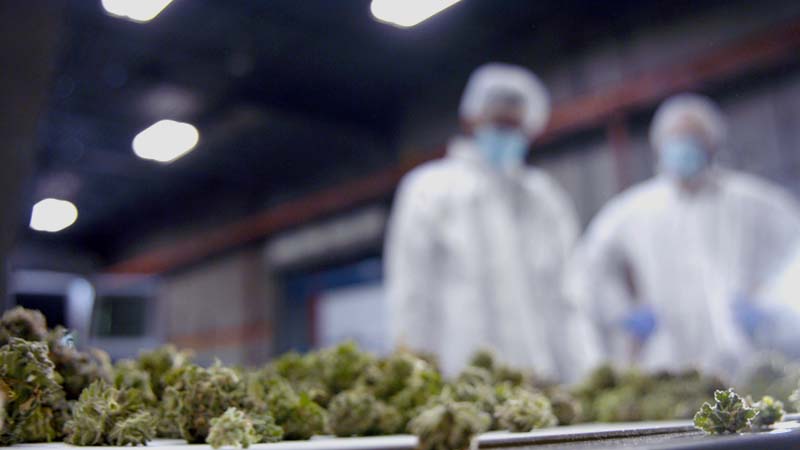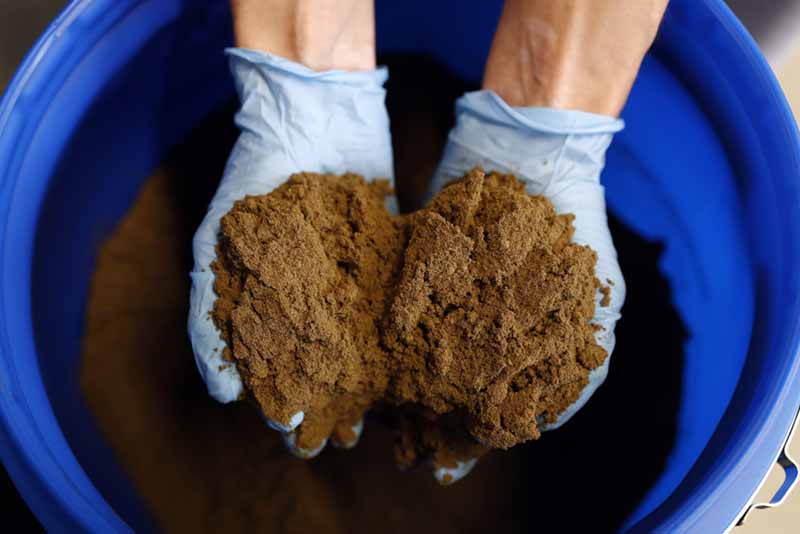To ensure a superior performance, CenturionPro’s elite harvesting solutions are developed alongside the cannabis community with the world’s best-brand name parts. Master growers from North America, South America, Europe and Australia rely on the technologies to replicate hand-trimmed flower at scale efficiently and reduce costs in the process. As we strive to continuously enhance our machines, we are constantly harnessing user feedback to improve our innovations. As a result of this advice, we have collated five top trimming tips for a lucrative and happy harvest.
1. PREPARE PROPERLY
Before plants are harvested, growers need to identify where flower will be stored and how it will be trimmed. As a labour-intensive stage in cannabis production, operations need to remain methodical to streamline costs. Primarily growers need to find a conducive trimming location, with plenty of light and free from dust or contaminants – which might taint the crop. Once a suitable space has been identified, they need to strategize workflow to identify how flower will be stored before its loaded into the hopper, how the hopper will be continuously fed and where finished flower will be kept.
Flower can be held in open large plastic containers before it is trimmed, but finished flower should be stores in glass jars for curing. By calculating how much cannabis needs to be trimmed within a given timeframe, growers can estimate the storage, staff and trimming solution needed. To simplify the process, the CentruionPro Product Selector easily converts grow size to required throughput.
To ensure compliance and that the final product is safe for consumption, operators must wear sanitized protective clothing to maintain hygiene standards including hairnets, coveralls and disposable gloves – with the latter vital to keep sticky trichomes on flowers and off fingers. All tools and containers need to be properly sterilized with rubbing alcohol, which can also remove sticky resin for sustained performance.
2. MONITOR MOISTURE
CenturionPro’s solutions have been specially designed to trim wet and dry cannabis in a single machine. However, anecdotal reports suggest their may be a sweet spot for optimal results. According to growers the optimal moisture content is between 12% and 14%, which many would consider a dry trim. An initial wet trim is still advised, as larger sugar leaves protrude from buds when hydrated and can be easily removed.
A loose wet trim speeds up the drying process and prevent pathogen development, however a slow dry has been attributed to terpene preservation and a more comprehensive purge of residual moisture, resulting in a smoother smoke. With a machine capable of trimming flower regardless of moisture content, growers can remove the bigger sugar leaves when wet to accelerate drying and then remove the smaller sugar leaves afterwards to prevent flowers drying too quickly.
To determine when a crop is optimal for trimming, growers should invest in non-invasive moisture meters. These can be used throughout cultivation to test the humidity of grow rooms and grow mediums, in addition to monitoring flower when drying and curing. Without such devices moisture content can be extremely hard to gauge accurately. In the right environment cannabis should dry sufficiently within two weeks, with flower still springy and returning to its original shape when squeezed. Small stems should snap when bent, but big stalks should remain pliable.
3. TIGHTEN THE TRIM
The current convention is to deliver as tight a trim as possible, removing anything not coated in trichomes. This includes the vast majority of sugar leaves, as they contain chlorophyll which contributes to an undesirable grassy taste. By removing everything not laden with cannabinoids, growers can increase the potency of their final product. Unfortunately this is incredibly difficult to achieve without damaging the flower underneath sugar leaves. Therefore CenturionPro enables growers to fine-tune suction and airflow through its trimming solutions with diverters, to prevent flower being drawn onto the cutting blades.
The risk of damaging flower rises exponentially alongside the closeness of the cut, so growers should start with a looser trim on a small portion of the harvest and incrementally tighten the trim until all sugar leaves are removed without harming flower. Once happy with the trim, growers can then apply that refined cut to the whole crop. As CenturionPro’s machines benefit from some of the largest hoppers on the market, there is a tendency to fill them to the brim – which can flood the tumbler. However, many report the machines perform optimally when a little over half full, with sufficient airflow to allow flower to move properly through the trimmer.
4. COLLECT KIEF
While its customary to clip as many sugar leaves as possible, as many are loaded with precious trichomes they need to be collected to maximize the harvest’s value. Cannabinoids and terpenes in trichomes are precious commodities, which need to be kept on flowers or processed for an additional source of revenue. As plants receive the greatest amount of physical contact during trimming, this crucial stage is also where growers lose the most trichomes and squander the most revenue. To avoid leaving money on the table, growers need protect trichomes throughout cultivation and collect any that detach during harvesting.
Kief can be pressed without specialist equipment to create hash, to provide a lucrative source of additional revenue. The more kief a grower can collect, the more hash they can produce and the more revenue they can generate. To provide peace of mind that even when delivering the tightest trim all trichomes are collected, our trimmers benefit from triple-bag kief and trim collection systems.
5. CONTROL QUALITY
The required quality of trim needs to be communicated from the outset, to set a standard so operators know what is expected of them. This is important as although the tightest possible trim is often desired, this is not always the case. Every cultivar has unique traits that growers want to accentuate and sometimes this extends to visual attributes. Mendocino Purps, for example, is celebrated for its purple sugar leaves. If all purple foliage is removed, it loses its famed attributes and consequently desirability in the eyes of consumers.
Even investing in superior harvesting solutions does not guarantee the perfect trim every time, as flower density fluctuates and impacts movement through the machine. As a result, growers need to remain diligent and be able to modify trim length on the fly. To monitor the standard of manicured flower, CenturionPro’s trimmers integrate with quality control conveyors, which enable growers to scrutinize the calibre of the final cut. This provides the opportunity to study every flower, spot concerns and make adjustments to rectify any issues.




